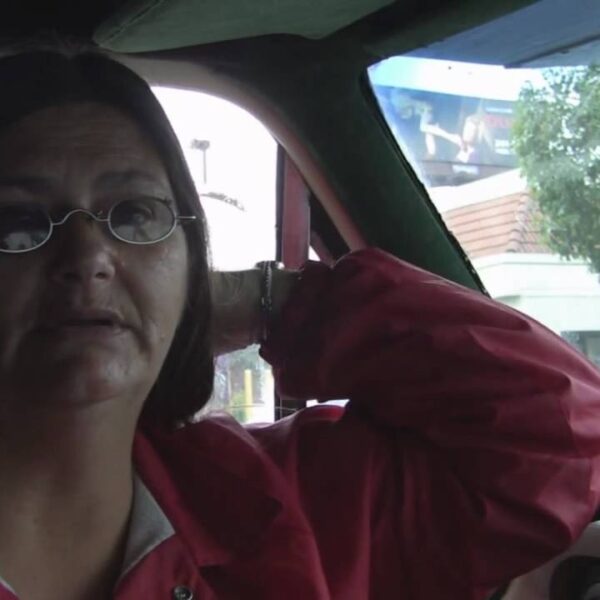Priced Out at the Pump
It’s bad enough that, for years, working-class Americans have been increasingly priced out of the housing market. Lately, with double-digit rent hikes hitting hard, many are even being priced out of the rental landscape and forced into various types of homelessness.
It would seem things couldn’t get any worse, yet somehow, they have. Now, with gas prices soaring, everyday people can’t even afford to live in their cars.
Who would have thought we’d see the day when vehicular homelessness became a luxury we couldn’t afford?
The Perils of Vehicular Homelessness
Homelessness is not just a label but an umbrella term encompassing a wide range of social injustices that force people out of their homes and into places unfit for human habitation. Due mainly to media imagery, many people wrongly equate homelessness with the unsheltered variation. In reality, there are many different ways to live unhoused. Some of these ways are more visible than others.
Vehicular homelessness is one of many categories of what we call hidden homelessness. People experiencing vehicular homelessness are often obscured in the shadows of industrial parking lots or hidden behind windshields, between blankets, and beside parking spaces.
Due to the obscure nature of vehicular homelessness and the poor likelihood of identifying members of this community, it was rather shocking that in 2021, USA Today revealed an astonishing number of newly unemployed Americans were living in their cars.
At the time, experts set their sights on the pandemic, the nosediving economy, and the high rates of evictions and foreclosures as possible culprits fueling the disturbing trend. In 2021, vehicular residents had plenty of troubles, ranging from lack of running water and electricity to the possibility of incurring hefty fines and fees for illegal parking. Some expressed a growing concern that their vehicles would be towed, their belongings locked inside, and their final ties with the housed community cut like lanes on a highway.
But the price of vehicular homelessness in 2022 is perhaps an even higher one, and it’s starting at the pump.
Gassed Up: High Gas Prices and Increased Inflation Exacerbate Vehicular Homelessness
According to CNBC, gas prices skyrocketed by nearly 50% between 2021 and 2022, proving that bad situations can worsen unexpectedly. This means that people who were living in their cars in 2021 could not afford the 14% national average rent hikes, nor could they afford to fork over almost half a mil for a median mortgage, no matter how many jobs they were working. Disgruntled but still determined, they turned to the family vehicle for help.
Professor Sara Rankin described vehicular homelessness as a fast-growing and alarming crisis. Many experts echoed the sentiment, calling the calamity “hidden,” “concerning,” and “unprecedented.”
As vehicular homelessness increased both in numbers and visibility, so did public camping laws, making living in a car not only dangerous but also a punishable criminal offense.
“If you only have so much in savings, you can either spend that money on three months of rent or get a vehicle,” explained vehicular resident and multimedia journalist Yesica Prado.
Now, whatever money people might have saved by huddling up in a car, RV, or minivan is being drained right into the fuel tank.
In a riveting interview with The Guardian, vehicular resident Anna Hokuf who fled an abusive home and wound up living in her car explained that now she must spend about $40 a day on gas just to stay warm and keep her engine running. Other vehicle residents are in the same boat, spending anywhere from $10 to $100 daily to stay gassed up.
This is yet another example of how much more expensive it is to be poor than wealthy. People who don’t have three months of rent in one lump sum spend almost double the average monthly rental payment just trying to stay warm in the vehicles they sleep in.
With crippling prices such as this, it would be nearly impossible to escape the overturning cycle of vehicular homelessness. Add to this inflation and public camping criminalization, and the situation is bleaker than ever.
Contact Your Local Policymakers About Housing, Homelessness, and Affordability
When politicians discuss homelessness, they find ways to tie in unfavorable character traits, tossing around words related to addiction, violence, and mental illness. Since the leading cause of homelessness is a lack of affordable housing, it’s time to remind our representatives that the issue of homelessness is more often tied to housing and affordability and should be addressed with this in mind.
With 22 million jobs lost since the pandemic’s outset and millions of hungry adults reporting insufficient wages, being priced out at a pump full of poverty is simply the latest in a long list of injustices.













